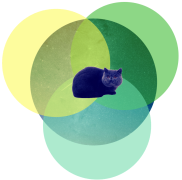Why do we say a gaggle of geese, a flock of sheep, a pride of lions or a swarm of bees? Well it harks back to medieval times when sportsmen grouped together collectives of beasties to refer to them in movement or attributing a quality to them – presumably while the poor creatures ran away in terror from their sounding trumpets and dogs in chase.
And so began the tradition that animals were distinguished by their own unique epithet. Attributing the wrong epithet to an animal was akin to social suicide in those days. It was a way for the posh to recognise those who came out in yesterday’s wash.
Although a lot of these epithets are now obsolete, they come in and out of favour. It’s hoped by adding them here that they return into use in some miraculous way.
- Lepe of leopards
- A bevy of roes
- A sloth of bears
- A singular of boars
- A sounder of wild swine
- A route of wolves
A rag of colts
- A stud of mares
- A team of oxen
- A tribe of goats
A skulk of foxes

- A cete of badgers
- A richesse of martins
- A fesynes of ferrets
- A nest of rabbits
- A clowder of cats
a kindle of young cats
- A shrewdness of apes
- A labour of moles
- Two greyhounds were called a brace, and three a leash
- Two harriers or spaniels were called a couple.
Men’s traditional occupations also had epithets…
- A state of princes
A skulk of friars

- A skulk of thieves
- An observance of hermits
- A safeguard of porters
- A stalk of foresters
- A blast of hunters
- A draught of butlers
- A temperance of cooks
- A melody of harpers
- A poverty of pipers
- A disguising of tailors
- A wandering of tinkers
- A fighting of beggars
- A blush of boys
- A bevy of ladies
This list comes courtesy of the always illuminating and fascinating Chambers Book of Days




One thought on “Thirty great medieval epithets for people and beasts”